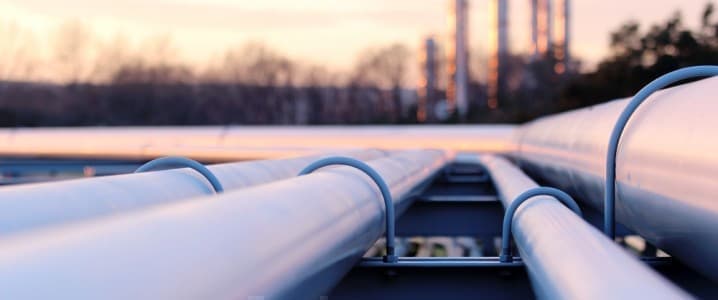Just three years ago, the Permian shale oil boom was under threat: production was growing fast, but pipeline capacity wasn’t. At one point, over one two-week period, eight of the biggest oil producers with a presence in the play shed a collective $15.6 billion in market value—or over $1 billion per day—as the producers rushed to ditch their backed-up crude at basement prices.
Now, three years later, there are too many pipelines in the Permian.
Almost half of oil pipelines carrying crude oil from wells in the Permian are going to be empty by the end of the year for lack of enough oil to transport, Reuters’ Devika Krishna Kumar reported this week, citing analysts and industry executives.
It’s all because of the pandemic, of course. The global spread of the coronavirus destroyed oil demand and led to a sharp drop in U.S. oil production. Neither demand nor production has fully recovered, although there are positive signs on the demand side and signs of growth on the production side as well. Still, the U.S. average daily production is still about 2 million bpd lower than the pre-pandemic record high reached, in no small part thanks to the exploitation of shale oil reserves in the Permian.
As a result of all this, the capacity utilization of pipelines in the Permian, according to Wood Mackenzie, could fall to 57 percent by the end of the year since a more solid recovery in oil production is not expected before 2022. But that may be the best-case scenario for production recovery.
Earlier this year, the chief executive of Pioneer Natural Resources said he did not expect a recovery in U.S. shale production for another few years, painting a pretty gloomy picture for both producers and pipeline operators. And his long-term forecast wasn’t too bullish, either.
“I really don’t see much increase in the Permian Basin or the U.S. shale over the next several years,” Scott Sheffield said at an investor webcast in early January. Related: World’s Largest Lithium Producer: Get Ready For A Mega-Rally
“I never anticipate growing above 5% under any conditions,” he added. “Even if oil went to $100 a barrel and the world was short of supply.” The shale major CEO explained this was because the service costs associated with adding more drilling rigs would undermine profit margins.
Forward three months: the U.S. is vaccinating people against the coronavirus at record rates, but infections are still on the rise in many parts of the country, which is fuelling constant uncertainty about both the immediate and the long-term future of demand for crude oil. And producers are taking a cautious approach this time around, adding rigs sparingly rather than rushing back into production growth.
All this is bad news for pipeline operators who just a couple of years ago had a bright future ahead of them. E&Ps were pumping millions of barrels of oil, a lot of them in the Permian. There was strong, even desperate demand for pipelines that weighed on prices, so producers were really motivated to commit future volumes to future pipelines to ensure their transportation to refineries and export terminals.
Then the pandemic hit, rendering much of the pipeline capacity that was under construction at the time unnecessary. Oil production in the Permian went from close to 5 million bpd in March 2020 to just 4.15 million bpd in September. Pipeline operators started postponing new projects. One, Enterprise Products Partners, even shelved its ECHO 4 crude pipeline project completely. Related: The Future Of U.S. LNG Hangs In The Balance
The problem that pipeline operators in the Permian now face is not just the absence of a strong enough recovery in both demand and supply of crude oil. According to Rystad Energy, pipeline capacity was already excessive in the Permian before the pandemic hit, and even if production recovers fully—which the analytic firm expects to happen—there were be too many pipelines in the basin.
“Permian oil infrastructure is already overbuilt. We anticipate that Permian oil output will recover to pre-COVID records of 4.9 million B/D by the end of the next year, but, even then, we will have 2 million B/D of unutilized outbound capacity,” Rystad Energy’s head of shale research Artem Abramov told the Journal of Petroleum Technology last September.
The options for pipeline operators seem to be few. One is to start transporting other liquids along the pipeline built for Permian crude, according to the Reuters report from this week. Another is to sell stakes in the infrastructure in hopes there will be enough oil to transport at some point in the future. Right now, pipeline operators are also offering producers discounts to encourage them to commit volumes to their network.
For the future, some are considering switching to renewable fuels, which are one of the new administration’s energy industry priorities. Hydrogen, according to the report, is also an option. This is the good news for the pipeline business: that once built, pipes can be used to transport more than one type of liquid. Perhaps in a somewhat ironic twist, the Permian’s surplus oil pipelines could become once more a necessity, this time for biofuels and hydrogen.
By Irina Slav for Oilprice.com
More Top Reads From Oilprice.com:
- Oil Demand Boosted By Highest Number Of Flights Since COVID Started
- Is Russia About To Invade Ukraine?
- ExxonMobil Set To Outperform As Oil And Gas Prices Climb

















